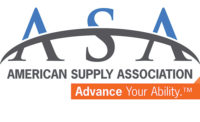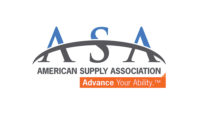ASA Washington Update

In his recent State of the Union address and even earlier on the campaign trail, President Trump touted his experience as a builder. As an industry that is locked arm in arm with those in the building community, it’s clear that when one industry partner prospers, so too do many others.
Washington has an uncanny way of unlocking prosperity in strange ways. By reducing tax rates it can encourage new investments, by unclogging the regulatory morass it can improve efficiencies and, of course, by increasing government spending it can put people to work on government contracts.
Washington also can work its will by simply getting out of the way. We know the classic stories of mammoth projects being completed in record times, such as the Pentagon and its astonishingly quick 15-month completion or the Empire State Building that took about a year and a half. Granted, both are exceptional examples of successful completions that clearly were priorities. And while we may never return to those days of unbridled efficiency, it mustn’t be forgotten that the speed at which these projects were achieved also was done at the expense of some of the workers.
Business groups, members of Congress and the White House appear aligned on a framework to get this done and after the end-of-year miracle of achieving tax reform at the tai- end of 2017, anything is possible. When ASA met with White House staff last fall, a big focus was on its goals for infrastructure legislation. Hoping to spend around $250 billion, they’ll largely be relying on public-private-partnerships of P3’s to take advantage of the billions of private- investment dollars as opposed to taxpayer dollars.
Republican leaders in the House and Senate have said the proposed infrastructure package will rely heavily on outside money, the P3’s. But areas at a disadvantage such as in rural America will require federal funding as they are unlikely to come up with the necessary funding from P3’s to guarantee a return on investment, which brings us back to government’s role and its ability to lay the foundation for progress.
Streamlining the process by which projects get completed is a good first step. In its recent report compiled by the aptly named “Problem Solvers Caucus,” a bipartisan group of House members focused on this problem, which ASA has worked with. The Problem Solvers Caucus identified earlier attempts by Congress to achieve this. Specifically, in previous law the Department of Transportation has been granted the authority to streamline the often painfully slow permitting review process. However, it has yet to issue regulations on this authorization.
Many in Congress support efforts to conduct environmental reviews alongside other permitting processes rather than one after the other. The time spent waiting for one review to end could be better spent conducting them at once.
While much of the preliminary justification and supporting documentation is on destination traveler, it clearly costs businesses just the same. From slowing delivery times, to preventing a plumber or electrician from getting to another job, the delays add up. Costing a plumber one job a day because of traffic delays is unnecessary and hits you square in the wallet!
ASA and others in Washington support efforts to remove these impediments, which is why we’re working with groups such as the Beyond the Runway Coalition, the National Association of Manufacturer’s Infrastructure Working Group and others. As we know, Congress will not act until it hears the loud noise of groups like ASA and the members we represent, calling on them to finally take the action that is needed.
Many challenges exist and while the success behind tax reform gives some hope, it should be noted the path to such reform took many years. With members of Congress soon running for reelection full-time, time rapidly becomes an insurmountable force.
Thankfully, infrastructure policy tends to lack the usual partisan roadblocks or sacred cows that cause such inaction by Congress. Road improvements and maintenance not only create jobs but make the lives of those that rely on them easier — increasing the movement of goods and reducing travel times, getting consumers out of their vehicles and on with their lives.
Looking for a reprint of this article?
From high-res PDFs to custom plaques, order your copy today!






